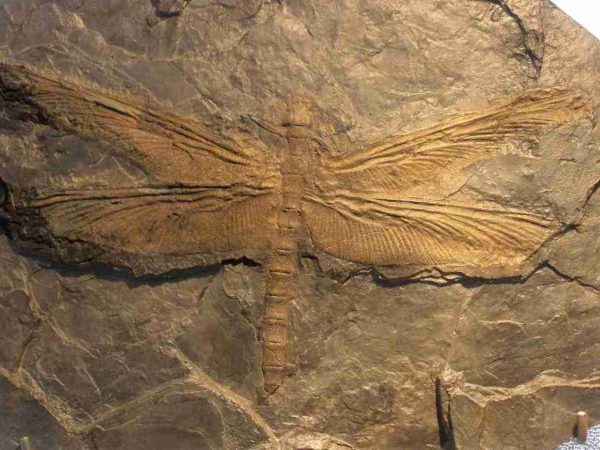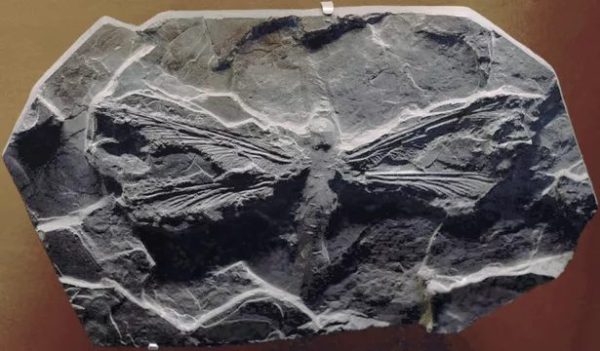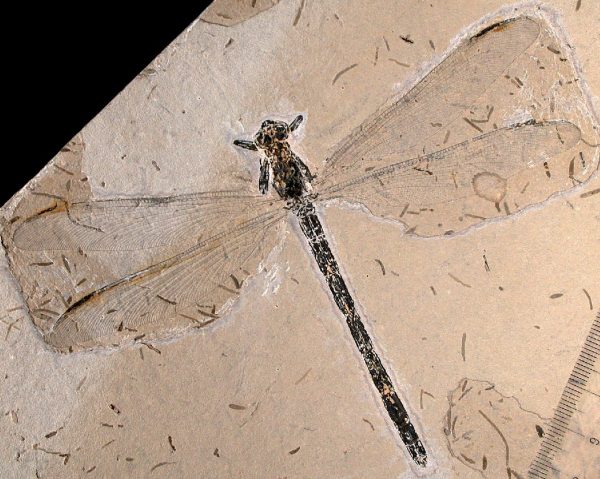In the ancient annals of Earth’s history, long preceding the reign of dinosaurs, the skies were ruled by an extraordinary and formidable creature known as “Meganeura” — a massive carnivorous dragonfly that etched an indelible mark on Earth’s prehistoric ecosystems.

These ancient aerial predators were true giants of the insect world, boasting wingspans that would dwarf even the largest dragonflies of today.
The name Meganeura, meaning “large-nerved,” was fittingly chosen for the intricate network of veins that crisscrossed its massive wings. With wingspans reaching up to 75 centimeters (nearly 30 inches), these prehistoric insects were the behemoths of their time, establishing dominance in the skies during the Carboniferous period, around 300 million years ago.

Meganeura, with its voracious appetite, held the apex predator status in its era. Preying on smaller insects, early amphibians, and even juvenile reptiles, these ancient dragonflies were equipped with sharp mandibles and keen vision, making them highly effective hunters. Their size bestowed a significant advantage in capturing larger prey.
The environmental conditions during the Carboniferous period, marked by high oxygen levels and lush, swampy landscapes, provided an ideal habitat for these giant insects to thrive. Meganeura’s colossal size likely resulted from the abundant oxygen, facilitating their respiratory systems to efficiently support their large bodies and wings.

Despite their dominance, Meganeura faced extinction as the planet underwent dramatic climate and ecosystem changes.
The transition from the Carboniferous to the Permian period brought a drier climate, causing the lush swamps and forests to recede. These shifts likely contributed to the decline and eventual disappearance of these magnificent insects.
The legacy of Meganeura presents a captivating chapter in the tapestry of Earth’s life history, showcasing the incredible diversity and adaptations that characterized our planet’s ancient inhabitants.

These massive carnivorous dragonflies serve as a reminder that, well before the age of dinosaurs, Earth’s natural world teemed with a diverse array of creatures, each playing a unique role in shaping the course of evolution.
As we delve into the astonishing world of “Meganeura,” we are transported back in time to an era when Earth’s skies were dominated by giant, carnivorous dragonflies — an evolutionary marvel that challenges our understanding of the incredible diversity of life that has graced our planet over the eons.





